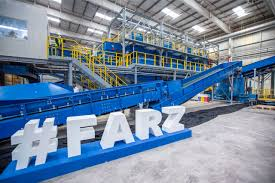Modern waste management practices are evolving to address environmental concerns and resource conservation. One crucial aspect of this evolution is the adoption of Material Recovery Facilities (MRFs) in waste management systems. This article explores the importance of MRFs and their impact on sustainable waste management.

Understanding Material Recovery Facilities (MRFs):
Material Recovery Facilities are specialized facilities designed to sort and process recyclable materials from mixed waste streams. They utilize advanced technologies such as conveyor belts, optical sensors, and manual sorting to separate different types of materials like paper, plastic, glass, and metals.
Benefits of MRF Systems:
MRFs offer several key benefits in waste management:
Resource Conservation: By efficiently sorting and recovering recyclable materials, MRFs help conserve natural resources that would otherwise be used in manufacturing new products.
Waste Reduction: MRFs contribute to reducing the amount of waste sent to landfills or incinerators, thus alleviating environmental pollution and landfill space concerns.
Energy Savings: Recycling materials through MRFs consumes less energy compared to producing new materials from raw resources, leading to reduced carbon emissions.
Job Creation: mrf waste management create employment opportunities in waste management and recycling industries, contributing to economic growth.
Technological Advancements in MRFs:
Modern MRFs are equipped with state-of-the-art technologies that enhance efficiency and accuracy in material sorting. Automated sorting systems, artificial intelligence (AI), and robotics are revolutionizing the recycling process, increasing throughput and improving material recovery rates.
Environmental Impact of MRFs:
The environmental impact of MRFs is substantial, as they play a crucial role in diverting recyclable materials from landfills and promoting a circular economy. Recycling through MRFs reduces greenhouse gas emissions, conserves water and energy, and minimizes environmental degradation associated with raw material extraction.
Challenges and Solutions:
Despite their benefits, MRFs face challenges such as contamination, equipment maintenance, and market demand fluctuations for recyclable materials. Addressing these challenges requires continuous innovation, quality control measures, public education on proper recycling practices, and collaboration between stakeholders in the waste management chain.
Role of Government and Industry:
Government policies and regulations play a vital role in promoting the adoption of MRFs and incentivizing sustainable waste management practices. Collaboration between government agencies, waste management companies, recyclers, and communities is essential for the effective operation and expansion of MRF systems.
Future Outlook and Sustainability Goals:
The future of waste management lies in the integration of advanced MRF technologies, increased recycling rates, and circular economy principles. Sustainable development goals emphasize the importance of waste reduction, recycling, and resource efficiency, positioning MRFs as integral components of achieving these goals.
Conclusion:
Material Recovery Facilities are pivotal in transforming waste management practices, promoting resource conservation, and mitigating environmental impacts. As MRF systems continue to evolve and expand globally, their importance in sustainable waste management strategies cannot be overstated. Collaboration, innovation, and public awareness are key drivers in maximizing the benefits of MRFs for a greener and more sustainable future.